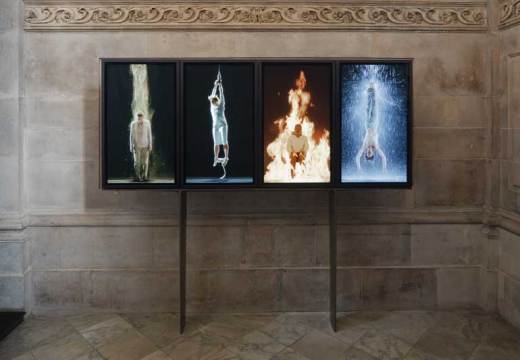The US east coast is enjoying a Rothko fest. On 13 May, Christie’s New York brought the hammer down on his soaring, 8.5 ft high painting in three colour-saturated blocks: violet-mauves, fire-orange, and burgundy-on-grey. Painted in 1952 during the first years of his maturity, it fetched $66.2 million.
Three days later Phillips New York sold a slightly smaller Rothko canvas painted in 1955, a painting of scintillating sky blues and burning oranges. Displayed beside it was a Rothko quote saying he wanted people to look at it, then turn their backs to the painting and feel its heat; I did as instructed, and felt it. Microsoft co-founder Paul Allen sold it for $56.2 million. By setting up long viewing periods, the auction houses enabled New Yorkers to enjoy both paintings before they disappeared back into private collections; Phillips had theirs up 3–14 May and kept it on public view even after the sale.
The following week, Harvard Art Museums (comprising the Fogg, Busch-Reisinger and Arthur M Sackler museums) announced their first special exhibition to mark the upcoming November reopening of their buildings in Cambridge, Massachusetts, which have been substantially re-thought, renovated and expanded by Renzo Piano. It will be devoted to Mark Rothko’s ‘Harvard Murals’, made in 1961–62.
The Harvard show takes a radically new approach to the display of Rothko’s work. Conservators will use specially calibrated lighting to restore the appearance of his original rich colours, which faded substantially while on display from 1964–79 in the penthouse dining room of Harvard’s Holyoke Center, for which they were made. The five large-scale paintings – plus a sixth that was not included in the final project, now exhibited for the first time – were Rothko’s gift to Harvard and will go on show with 32 other Rothko works of the period, including related studies. Together, the show makes possible an exploration of Rothko’s creative process, and how he saw the paintings as a single image for a specific location.
Meanwhile, a remarkable exhibition at New York’s Pace gallery digs into the core of the Rothko consciousness. More than 30 large works on paper made between 1941 and 1947, almost all for sale, hang on plain grey walls free of labels, an arrangement that enhances their power. Most are made with various combinations of watercolour, charcoal, ink and graphite.
Each picture repays close attention. The heavily textured paper is layered with colour, Rothko using whatever medium he needs for the effect he wants. Sometimes the colour is floated on water-saturated paper; sometimes it is dry on the brush, dragged across the rough surface so glimmers of white paper enhance it. Rothko layers these and other techniques to create passages of colour – one of chestnut brown with cobalt blue, another of strawberry pink with elephant grey, another of apricot orange with duck egg blue. Clear throughout is Rothko’s exploration of and experimentation with the power of colour. Made before both the star auction lots and Rothko’s Harvard gift, the show provides a rare insight into the artist’s development.
‘Mark Rothko: The Watercolours 1941–47’ is at Pace New York until 21 June.
‘Mark Rothko’s Harvard Murals’ is at the Harvard Art Museums from 16 November–26 July 2015.
Unlimited access from just $16 every 3 months
Subscribe to get unlimited and exclusive access to the top art stories, interviews and exhibition reviews.



















![Masterpiece [Re]discovery 2022. Photo: Ben Fisher Photography, courtesy of Masterpiece London](http://www.apollo-magazine.com/wp-content/uploads/2022/07/MPL2022_4263.jpg)
It’s time for the government of London to return to its rightful home